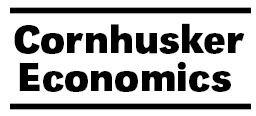Agricultural Economics, Department of

Cornhusker Economics
Date of this Version
October 2004
Document Type
Newsletter Issue
Citation
Cornhusker Economics
Abstract
Preliminary information from the U.S. 2002 Agricultural Census has recently been released. The chart groups U.S. census data for Nebraska farmers into three categories: under 34 years of age, 35 to 64 and over 65. The data indicates a 20 year trend of fewer farmers, older farmers and very few beginning farmers. A farmer is defined, for purposes of this census, as anyone producing or selling at least $1,000 of agricultural commodities annually. The average age of Nebraska farmers continues to rise. The average age in 1982 was 48.5 compared to 53.9 in 2002. The increase in average age is due to both an increase in the over 65 age group (8,777 in 1982 to 12,203* in 2002), as well as a decrease in the under 34 age group (13,436 in 1982 to 3,782* in 2002). Even with adjusting for the new calculation method adopted for the year 2002, which if applied to the 1997 census would have resulted in computing an additional 3,085 Nebraska farmers, the total number of farmers in the state also continues to decline. The adjusted number of younger farmers in the age group of 34 and under in the year 2002 is less than one-third the number in that category 20 years ago. There are obvious barriers to beginners such as high capital investment costs, narrowing profit margins and increased cost of family living. But are there strategies that can assist beginners that want to return to agriculture?


Comments
Published in Cornhusker Economics, 10/06/2004. Produced by the Cooperative Extension, Institute of Agriculture and Natural Resources, Department of Agricultural Economics, University of Nebraska–Lincoln.
http://www.agecon.unl.edu/Cornhuskereconomics.html